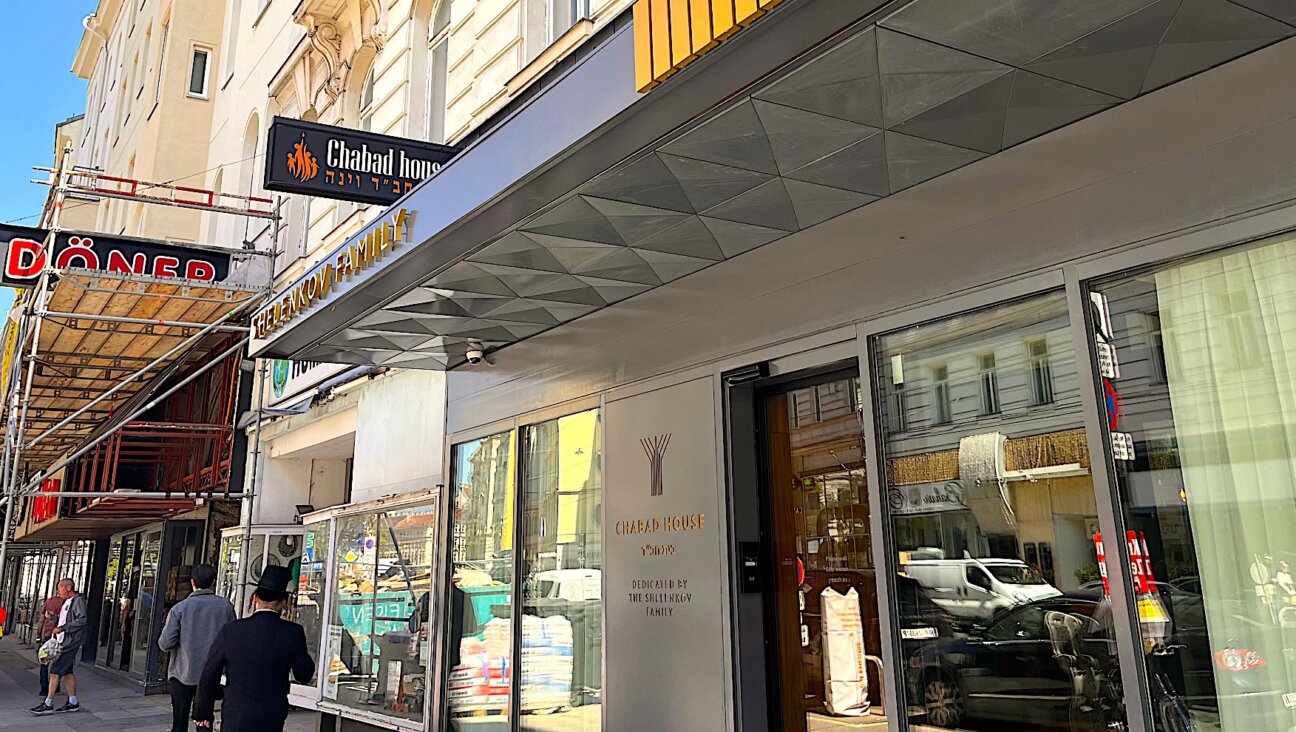ווידעאָ: דאָס ייִדישע ליד „לשנה טובֿה — אַ גוט יאָר‟WATCH: The Yiddish Song “Leshone Toyve, A Gut Yor”
כאָטש עס קלינגט ווי אַ פֿאָלקסליד, האָט חנה מלאָטעק עס קאָמפּאָנירט אין די 1940ער יאָרן. הערט ווי עס פֿירט עס אויף איר אייניקל, אַבֿרהם

Graphic by Angelie Zaslavsky
ווי אַ קינד אין פֿילאַדעלפֿיע אין דער אָרטיקער ייִדישער פֿאָלקסשול האָב איך זיך אויסגעלערנט אַ ריי לידער אויף ענגליש, ייִדיש און העברעיִש און אַפֿילו אַ פּאָר אויף דזשודעזמע וועגן די ייִדישע יום־טובֿים. (די פֿאָלקסשול האָט דעמאָלט, צום באַדויערן, מער ניט געלערנט קיין ייִדיש). אויף וויפֿל איך קען זיך דערמאָנען, איז דאָס איינציקע ייִדישע ראָש־השנה ליד וואָס מיר האָבן געזונגען געווען „לשנה טובֿה — אַ גוט יאָר‟.
נאָך דעם וואָס איך האָב זיך אויסגעלערנט ייִדיש איז מיר געווען אַ חידוש, וואָס דאָס ליד איז ניט ברייט באַקאַנט. ווי אַ קינד האָב איך געמיינט, אַז ס׳איז אַן אַלט פֿאָלקסליד. ווי עס ווײַזט זיך אויס, איז דאָס ליד ניט אַזוי אַלט. ס׳איז פֿון די 1940ער אָדער 1950ער יאָרן און געשאַפֿן האָט עס די ייִדישע מוזיקאָלאָגין חנה מלאָטעק ז׳׳ל, וואָס האָט דעמאָלט געאַרבעט ווי אַ געזאַנג־לערערין אין די ייִדישע פֿאָלקסשולן. זי האָט באַאַרבעט די ווערטער פֿון אַ ליד אָנגעשריבן פֿונעם פּאָעט שמואל צעסלער.
אָט דערקלערט זי אין אַן אינטערוויו מיט האַנקוס נעצקי ווי אַזוי זי האָט געשאַפֿן דאָס ליד:
מיט פֿיר יאָר צוריק האָט זיך באַוויזן אויף „יוטוב‟ אַ פּרעכטיקע רעקאָרדירונג פֿונעם ליד, אויפֿגעפֿירט פֿון אַ קינדערכאָר בײַם „אַרבעטער־רינג‟ אין 1974. ליידער קען איך איצט אין ערגעץ ניט געפֿינען די רעקאָרדירונג, אַחוץ אויף אַ פּלאַטע מיטן נאָמען „גוט יום־טובֿ קינדער‟, וואָס מע האָט קיינמאָל ניט אַרויסגעלאָזט ווי אַ קאָמפּאַקטל, שוין אָפּגערעדט ווי אַן ”עם־פּע־דרײַ“. אַן אויסצוג פֿונעם ליד קען מען יאָ הערן דאָ.
איך האָב אָבער יאָ געפֿונען דעם ווידעאָ, אין וועלכן דער מינסקער ייִדישער כאָר שטעלט פֿאָר דאָס ליד. אונטן, נאָך 2:23 מינוט, קען מען זען ווי דער יונגער רבֿ, אַבֿרהם מלאָטעק, און זײַן פֿרוי יעל קאָרנפֿעלד זינגען דאָס ליד. אַבֿרהם איז, אַוודאַי, חנה מלאָטעקס אַן אייניקל.























